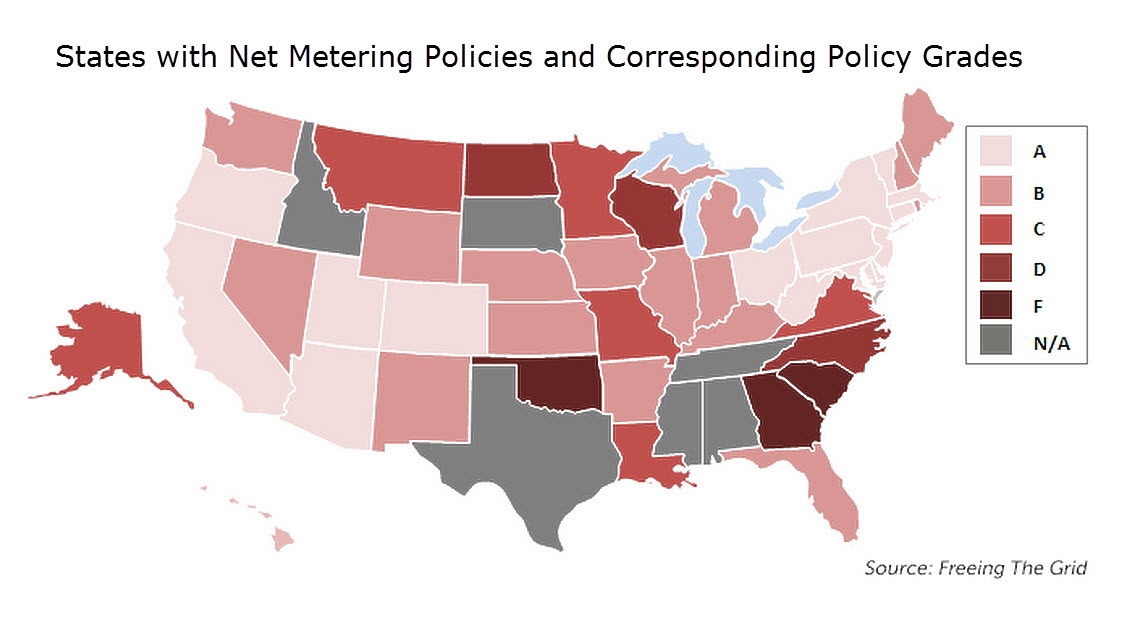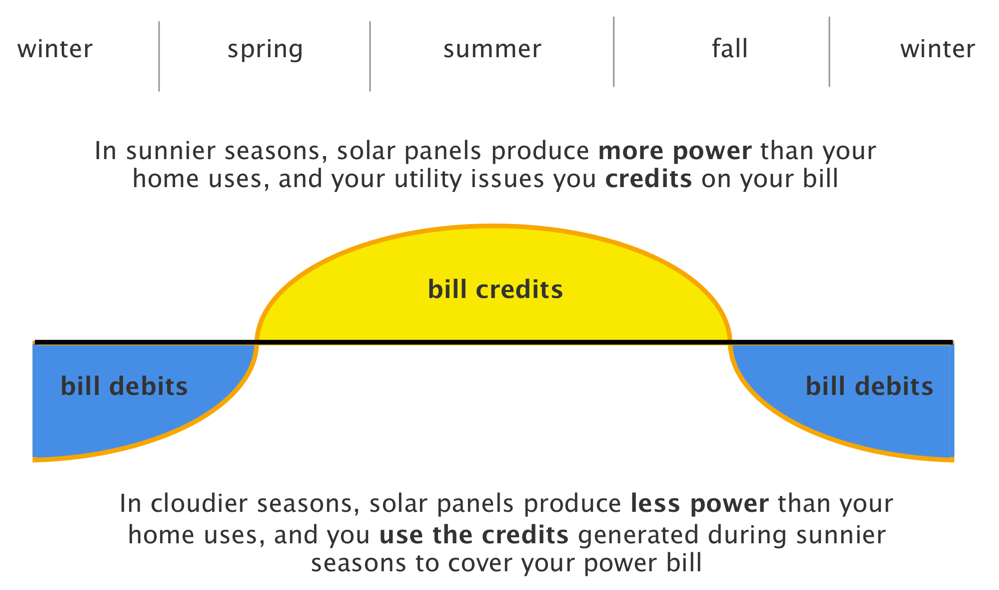Net Metering: Selling Your Extra Solar Power Back to the Grid
Discover how much you can save today with our solar calculator
What is net metering?
One of the most common questions people have about solar is “what happens if my panels produce more energy than my home uses?” In almost every state, if your solar panels generate more power than you consume, you can send this power back the utility and receive credits on your next monthly utility bill. This is known as net metering. At the end of the year, if you have credits leftover, you have the option to continue to roll the credits over to the next year, or receive a cash payout for the value of the credits.
How Does Solar Net Metering Work?
Due to how solar power system works, most systems will sometimes produce more energy that can be used at a given time.Net metering allows homeowners that have grid-tied solar energy systems to receive credits for any energy their panels produce that they don’t use. A grid-tied system means that the home is still connected to the utility’s power grid, allowing them to consume energy from the grid (if necessary – like at night when the panels aren’t producing power) and feed excess power their panels produce that they don’t need.
Where is Net Metering Available?
Net metering is currently available in every state with the exception of Texas, Mississippi, Alabama, Tennessee and South Dakota.
Different states and utilities have their own qualifications for their net metering programs.
We’ve compiled information on net metering California programs in the following regions on the following pages:
San Diego Gas and Electric – SDG&E net metering
Southern California Edison – SCE net metering
Pacific Gas and Electric – PG&E net metering
Nevada Energy – NV Energy net metering
For additional utilities, the Database of State Incentives for Renewables & Efficiency has information on all the different net metering programs, which can be found here: DSIRE (the Database on State Incentives for Renewable Energy, and Freeing the Grid is another excellent resource on net metering policy.

Can I Size my System to Always Produce Excess Energy?
Systems are sized to fit your home’s average energy consumption, since the mail goal for homeowners installing solar is to offset all or a majority of their annual energy costs. While annual electricity consumption varies greatly from house to house, the average size of a solar installation in the US is 5kW.
Most utilities have a cap on the size of the system homeowners can install. It’s generally much higher than the average home consumes, so you don’t need to worry that you won’t be able to install a sufficient sized system for your needs. However, having a limit on the system size is necessary to ensure that systems aren’t being intentionally oversized in order to make a significant amount of extra money off of the energy produced.
Net Metering Facts
- Receive credit from your utility for electricity your panels produce but you don’t use
- Rewards you for excess energy generated by your panels
- Available in the majority of states
- Each utility determines their net metering policies



